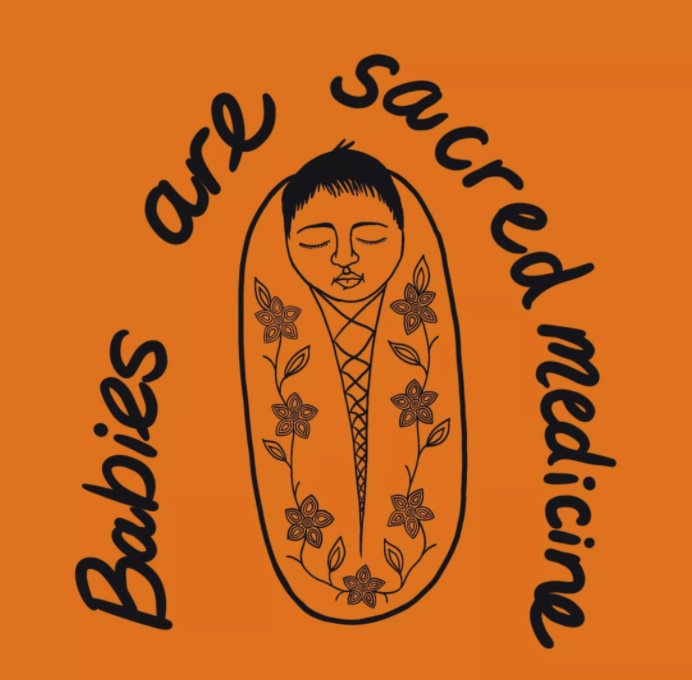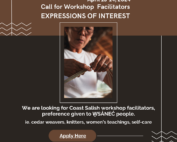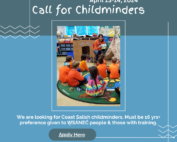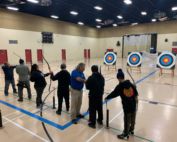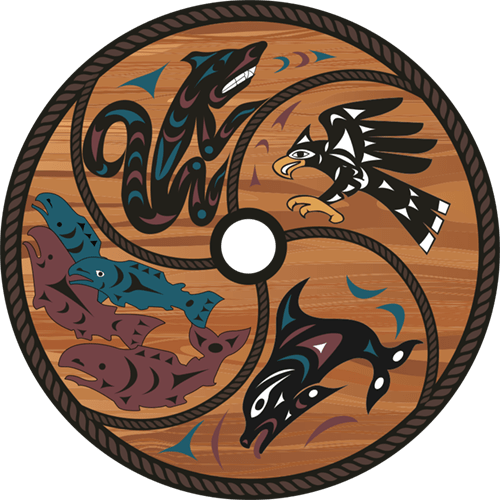This September 30th, Canada observes the first annual day of acknowledgement of the harms caused by colonization, honouring the lives that were lost and those that were irreversibly impacted by the residential school system.
On this day, the W̱SÁNEĆ Leadership Council encourages every settler to take meaningful action towards reconciliation.
Artwork by Kayla Bellerose
Following the delivery of the final report of the Truth and Reconciliation Commission, which recommended 94 calls to action, Prime Minister Justin Trudeau said:
“The burden of this experience has been on your shoulders for far too long. The burden is properly ours as a government, and as a country.”
Beyond the responsibility of the government, it is time that each and every settler who lives on the lands now known as Canada takes ownership of this burden and takes action. Only then can true reconciliation begin.
As long as individual settlers defer or refuse to do the work of reconciliation, harm continues to be perpetuated. Dave Paul, the former CRD Liaison at the WLC explains:
“A lot of people don’t know about us. They don’t know that as Indigenous people we have been living here in harmony with the land for thousands of years, long before settlers came here. I think that not knowing about our history and our culture can lead to a lot of fear, which can cause racism and violence.”
Gord Elliott, the Director of Operations shares,
“The National Day of Truth and Reconciliation isn’t a holiday. It’s a day that can be the start of a new beginning for our relationship with settlers. A day that shines a light on the importance of education and action; on the individual’s choice to do the work to become an ally, to refuse to participate in continued harm towards our people.
There have always been settlers on our territories who are allies, from the settlers who stood beside us in 1891 when we petitioned to establish our own school, to those who have worked to return our land.
We want to speak directly to our neighbours who haven’t taken the second chance being offered and found their own path toward reconciliation,” Gord continues.
Beginning with understanding
Allyship begins with an understanding of the truth of what Indigenous people have endured throughout the history of colonialism, including the legacy of harm from the residential school system that still reverberates through Indigenous communities today.
Most people, by now, have heard of the remains of 215 children at the site of the Kamloops Indian Residential School. What isn’t as common knowledge for settlers, is that the number of children who died as a result of abuse or neglect is estimated to be well over 4,000.
In fact, over 150,000+ Indigenous, Metis and Inuit children were forced to attend the 130 residential schools that were in operation from 1831-1996 in Canada.
Many W̱SÁNEĆ community members went to Kuper Island, now known as Penelakut Island, accessible by ferry from Chemainus.
Shown above, a link to the documentary, KUPER ISLAND: Return to the Healing Circle. Métis filmmaker Christine Welsh and Peter C. Campbell join survivors of the school, 20 years after its closure, as they begin to break the silence and embark on an extraordinary healing journey
At the time, however, it was known by some as “Alcatraz.” For almost a century, hundreds of Coast Salish children were sent to Kuper Island where they were forbidden from speaking their language, forced to deny their cultural heritage, and often faced physical and sexual abuse. Recently, Penelakut Tribes announced the discovery of 160 unmarked graves on Kuper Island. Others died trying to escape the island by drifting on logs across the water. And, many more died years later, looking to escape their memories.
It was in a facility much like the one at Kuper Island that residential school survivor Phyllis Jack Webstad attended in Williams Lake. At the age of 6, on her first day, Phyllis was stripped of her new orange shirt that her grandmother had bought her. Orange Shirts now symbolizes how the residential school system took away the Indigenous identities of its students.
“One of the things that hasn’t been uncovered is how many of our people are still suffering the effects of residential school trauma, not just the people that went there. The intergenerational trauma that extends. That’s something that most of us don’t even know about each other,” Eric Pelkey, Community Engagement Coordinator shares.
“I went through that with my mother, even though my sister and I were survivors, my mother never shared that she went through the same thing until close to the end of her life.
It’s a hidden bomb in our communities. People don’t know what’s wrong really or that there are things you can try to do about it, besides drugs/alcohol.”
Cultural Genocide
The Residential School System was only one arm of a system that worked to eradicate Indigenous people entirely. Coerced sterilization practices on Indigenous women were commonplace all the way into the 1970s.
In addition, cultural practices such as hunting and fishing by Indigenous people were made illegal, and racism made it impossible for Indigenous to obtain employment. It was only by knitting what is now known as Cowichan Sweaters that many families survived.
This legacy of racism and attempted genocide still causes harm to Indigenous people today; there are over 4000 murdered and missing Indigenous women in Canada – rates far higher than any other demographic. Further, well over half the children in foster care are Indigenous.
Wearing orange shirts is just the beginning.
For settlers, to purchase and wear an orange shirt shows solidarity with communities that are still reeling from the lost generations of children and intergenerational trauma.
The orange shirt is just a beginning though.
The WLC has compiled a list of resources and suggested steps for reconciliation that each individual can follow at their own pace. Included in these suggestions are many local places that are accepting donations, a critical component to facilitate Indigenous healing.
“I’m glad it’s a new national day, it brings a lot of recognition of the trauma we’ve been through and trauma that exists because of it. More needs to be done to deal with intergenerational trauma that’s been wrought on our people,” shares Pelkey.
The importance of donations.
“The thing that saved me was my family, parents, brothers and sisters. Also the culture – I was kind of in denial about being a part of the culture until my parents forced me into it and told me I need to deal with this…start healing and let go of the things that are holding me back. I went in unwillingly but I thanked them eventually. It showed me what the culture can do… give you the tools to heal yourself instead of medicating. You can heal and go on with your life,” shares Pelkey.
Donations help provide W̱SÁNEĆ people with much-needed resources for education, athletics, and cultural initiatives. By equipping Indigenous groups with the funds they need to support their own healing, settlers can take a large step towards reconciliation.
Visit the Resources For Settlers Page to learn more about suggestions for settlers as well as a list of local places to donate.


